XYCLONE-MONEY AND GIRLS
http://youtu.be/n1Kh0QWiinI
MY FLESH AND BONE, JOSE MARTE
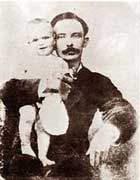
Monday, 09 February 2009 05:45
By Jose Raul Gallego, student of Journalism
Jose Marti is a symbol for all Cubans. Considered the apostle of this Island nation, the architect of the Cuba’s War of Independence (1895-1898) and ultimately the mastermind of the attack on the Moncada garrison in 1953, Marti was the most lucid thinker of his time. However, this Marti is simply a small portion of an unbreakable whole.
The greatness of some men sometimes is misinterpreted by others, and often people commit a naïve mistake which is idolizing them and believing they are mythical, beyond any mortal.
Discovering Marti has been one of the most amazing experiences of my life. For years I recited the Versos Sencillos, learnt by heart his chronology, his aphorisms – useful enough to support my essays at school-, however, I didn’t know the man. I knew that he had been born in Havana, that had wrote much, that had founded the Cuban Revolutionary Party, that had fought for the freedom of this country, and something else. That was the Marti of my childhood, someone resembling a statue or a drawing hanging on the wall of my first school. Among so many historic dates, fragments of his literary work and busts, I had forgotten the man.
Marti was only that, nothing else. Unconsciously, I was missing the best of the greatest Cuban. But time set people and experiences on my way and little by little they opened my eyes. So, after hours of reading, the cold marble that I had in my mind began to take shape. I started to envisage him, skin-headed in a prison, and with his ankle bleeding because of a blister, caused by a thigh and heavy shackle. I discovered him courageous, facing those who branded him a coward, wearing a black tie and an iron ring with an inscription on it that read: “Cuba”. Or I imagined him walking down the streets of New York or Tampa, thinking how to be a good provider for his only child, but without touching the funds of the Revolutionary cause.
That man was somebody new, different, and unknown. He was human like me. A student full of love and ideas, wandering around the city of Aragon, in Spain, far from his family, his beloved mother and without the hope of seeing the palm trees again. Banished to a foreign country, but with the Island beating in his chest. He lived scorned by some who didn’t want an educated urban fellow to lead the insurrection.
Embracing his son, Marti wrote letters to the generals of the previous warfare and collaborated with several publications in the continent to support his family. An in the evenings he awaited his verses, endless companions that followed him like ghosts and obliged him to leave his soul on the paper, to suffer his anguish, his infatuations, his long-held desires, to lay the foundations of one of the greatest literary movements in America: El Modernismo.
This is the Marti I admire. The one, who was mistaken with the impressionist painters, but knew to rectify on time. The one, who could overcome the initial glare produced by a society that appeared like a model of freedom for the eyes of the world, and looked even further the horizon to discover its hatreds and contradictions. The one, who admired Abraham Lincoln and revered Karl Marx.
The one who showed refined manners in the ballroom and appraised the good wine, but also took the wheel under the storm and faced the bullets of the enemy when it came down to it. The gallant man who once wrote that his teeth hurt because of “the cups of flesh”.
The father, who knew synthesized, in the genial verses called Ismaelillo, the tenderest images of love. The one, who left aside his delicate writing and turned his pen into a knife to vindicate Cuba from the offences the US daily The Manufacturer had published. That flesh and bone man who elaborated an ethical time-proof project, based on dignity, on the respect to the human being, on love. A program that does not grow old because everlasting are the ideals of justice.
And Marti became my Teacher. He taught me to think by myself, he showed me the need to fight for what one believes, regardless the price one has to pay, he taught me about politics, about economy, philosophy and arts…And also about life. I learnt from his poetry that “of woman, you may die of her bite, but don’t tarnish your life defaming a woman” and men are not “measured by the times they fall, but for the times they stand up.” And that distant Marti became an example, a goal, a patter to follow.
And the thing is that the greatness of some men lies in what they are capable to demand from themselves, of living a life of sacrifices and going forth when others receded. No one tries to imitate the impossible, but the heroes are there – like the Sun, with spots and lights- by one side of the road, telling us that we can, that we carry what is essential inside us. And that above doctrines, isolations, material and ideological borders lays the human will, the love that creates wonders. (Translation Gualveris Rosales Sánchez)
http://www.cadenagramonte.cu/english/index.php?option=com_content&view=article&id=58&Itemid=14
LUCKY ENOUGH?
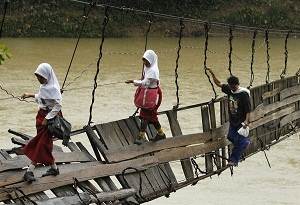 By David R Arnott, msnbc.com
By David R Arnott, msnbc.com
For Sofiah and her classmates, the journey to school just got a whole lot harder. The Indonesian schoolgirl lives on one side of the Ciberang River but her school in the village of Sanghiang Tanjung is on the other – and the river has been flooding.
On Monday, the rising waters broke a pillar supporting a suspension bridge that crosses it, the head of the village told Reuters.
Faced with an extra 30 minutes’ walk to cross via an alternate bridge, Sofiah and her friends have chosen to undertake the precarious crossing of the collapsed bridge instead.
As word has spread, the media gathered to film a feat worthy of Indiana Jones. But the children don’t appear to be perturbed, safely making it across and continuing to school.
At least they have something to say when their parents ask, “What happened at school today?”
THE ARK OF THE COVENANT-GOODMORNING
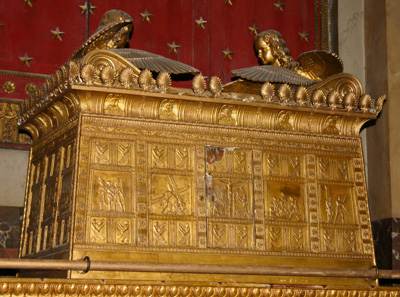
Ark of the Covenant: Mystical Object or Historical Artifact?
The Ark of the Covenant means different things to different people. For some, the Ark is a mystical object that contains supernatural powers too terrifying to comprehend. For the pop-culture minded, it is the priceless treasure sought after by the fearless Indiana Jones in Raiders of the Lost Ark. To others, it is an ancient artifact that is highly coveted for its “religious” significance, similar to the “holy grail.” With all the societal myths surrounding the Ark, it is worthwhile to take a moment to investigate its true origin and purpose. Is the Ark of the Covenant as powerful and terrifying as some have portrayed it to be? Is it merely something dreamt up by Hollywood to lure our movie-going dollars? Or could there be more to this ancient object that has relevance for us today?
Ark of the Covenant: The History Behind it
The Ark of the Covenant is first mentioned in the Bible in Exodus 25. Following Israel’s deliverance from slavery in Egypt, God instructs Moses to build a Tabernacle (or tent) in which the Israelites will worship God. Placed in a special area known as “the Holy of Holies,” the Ark of the Covenant was the most sacred object in the Tabernacle. Detailed instructions were given by God to construct the Ark. It was to be made with acacia wood and overlaid with gold. Dimensionally, the Ark was to be 2.5 cubits (1 cubit is approximately 18 in.) long and 1.5 cubits wide and high. Atop the Ark were two gold cherubs that stood with their wings covering an area of the Ark known as the “Mercy Seat.”
The Ark of the Covenant contained three items of extreme significance to the Israelites. The first was two stone tablets bearing the divine inscription of the Ten Commandments. The Ten Commandments formed the foundation of God’s covenant with Israel, commonly referred to as “The Law” (Exodus 31). The second item in the Ark was the rod of Aaron. God miraculously caused Aaron’s rod to bud with blossoms to show the rest of the tribes of Israel that it was God’s will for Aaron to be in charge of the Priesthood (Numbers 17). The last item was a golden pot of manna. Manna was the starchy food God miraculously provided for the Israelites during their 40 years of desert wanderings (Exodus 16).
The Ark of the Covenant was where God manifested His presence on earth. The Ark went ahead of the Israelites wherever they traveled. Not only was it the center of worship when it resided in the tabernacle, but the Ark also protected the Israelites in battle, supernaturally defeating any adversaries that came before them (Joshua 6:3-4). The Israelites also went to the Ark to seek God’s guidance and wisdom for the nation (Numbers 7:89, Exodus 25:22).
Ark of the Covenant: A Temporary Means of Forgiveness The Ark of the Covenant was more than just a special furnishing with supernatural powers — It was also the Israelites’ means of relating to God. The Ark of the Covenant could only be approached once a year by the high priest on “Yum Kippur”- the Jewish Day of Atonement. On this day, the high priest would enter the Holy of Holies with the blood of a sacrificed lamb. It was also only on this day that God’s presence manifested between the two Cherubs. The high priest would sprinkle the blood of the sacrificed lamb on the Mercy Seat. Once received by God, the blood of the lamb atoned (covered) for the sins of the high priest and the entire nation of Israel. This ritual was performed continuously, year after year. The Ark of the Covenant played a key role in the forgiveness of sins.
Ark of the Covenant: Foreshadowing the Coming Messiah At first glance, the blood sacrifices associated with the history of the Ark of the Covenant may seem somewhat disturbing. Slaughtering animals and offering their blood on an altar begs of the occult. It is important to note, however, that these sacrifices were not intended to appease the wrath of a bloodthirsty deity. God does not desire the blood and suffering of helpless lambs (Hebrews 10:8). The biblical text repeatedly shows that where there is sin, the unavoidable result is death. The sacrifice of the lamb points to the severity of sin. Sin must always be atoned (paid) for in order for God to be just (Hebrews 9:22). God’s compassion enabled the sins of Israel to be transferred upon the lamb. More importantly, these sacrifices were foreshadowing a greater sacrifice yet to take place — the sacrifice of the Jewish Messiah, Jesus Christ. God knew that these continual sacrifices would be insufficient to pay for the sins of Israel, much less the sins of all humanity. Therefore, God provided Jesus Christ as the ultimate sacrificial lamb, which became the greatest act of love in all history. A Roman cross became the ark on which Christ was sacrificed. The blood of Christ, once and for all, atoned for the wrongs of all who would accept Him as their Savior (John 3:16).
Ark of the Covenant: Replaced by God’s New Covenant The Ark of the Covenant disappeared from the Jewish Temple somewhere before or during the Babylonian invasion of Jerusalem in 586 BC. In anticipation of the Ark’s disappearance, the prophet Jeremiah wrote: “And it shall come to pass, when ye be multiplied and increased in the land, in those days, saith the LORD, they shall say no more, The ark of the covenant of the LORD: neither shall it come to mind: neither shall they remember it; neither shall they visit it; neither shall that be done any more” (Jeremiah 3:16). Even before Jesus, Jeremiah’s prophecy revealed that there would be no more need for the Ark of the Covenant in the future. God had a better covenant He would bring to pass — the new covenant in His Son, Jesus Christ.
****RULES**** 1. Debates and rebuttals are allowed but disrespectful curse-outs will prompt immediate BAN 2. Children are never to be discussed in a negative way 3. Personal information eg. workplace, status, home address are never to be posted in comments. 4. All are welcome but please exercise discretion when posting your comments , do not say anything about someone you wouldnt like to be said about you. 5. Do not deliberately LIE on someone here or send in any information based on your own personal vendetta. 6. If your picture was taken from a prio site eg. fimiyaad etc and posted on JMG, you cannot request its removal. 7. If you dont like this forum, please do not whine and wear us out, do yourself the favor of closing the screen- Thanks! . To send in a story send your email to :- [email protected]



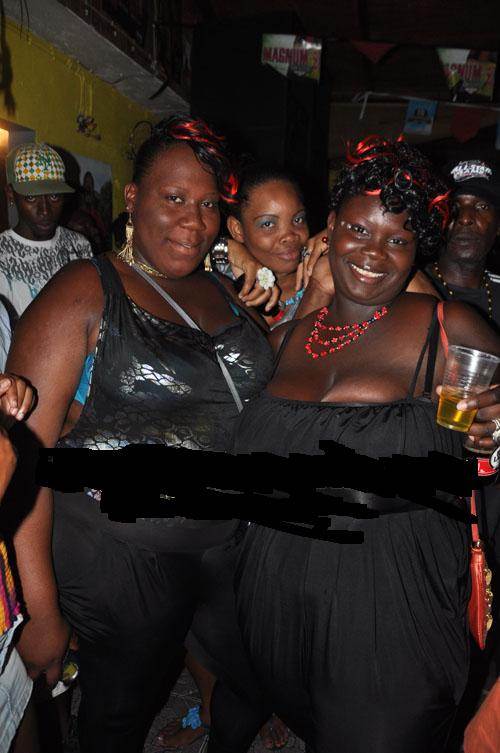
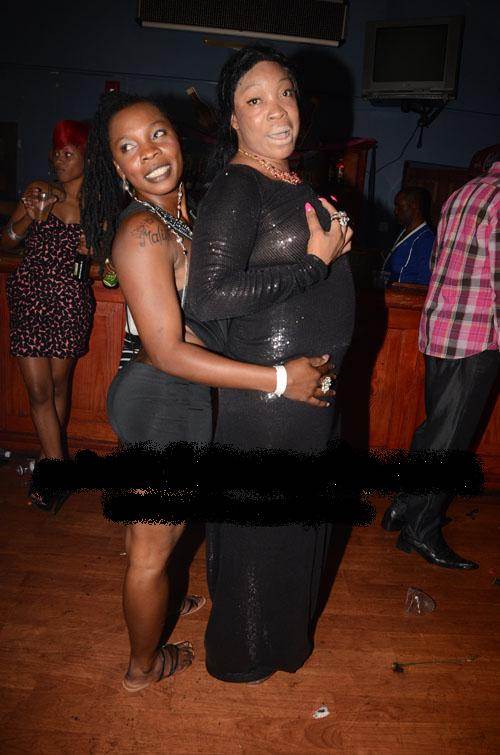
Recent Comments